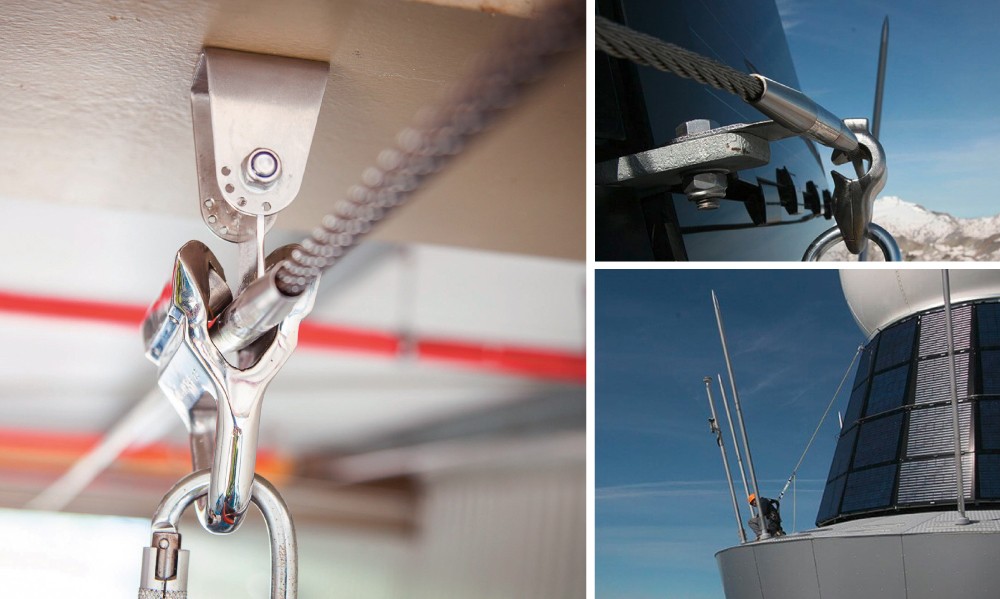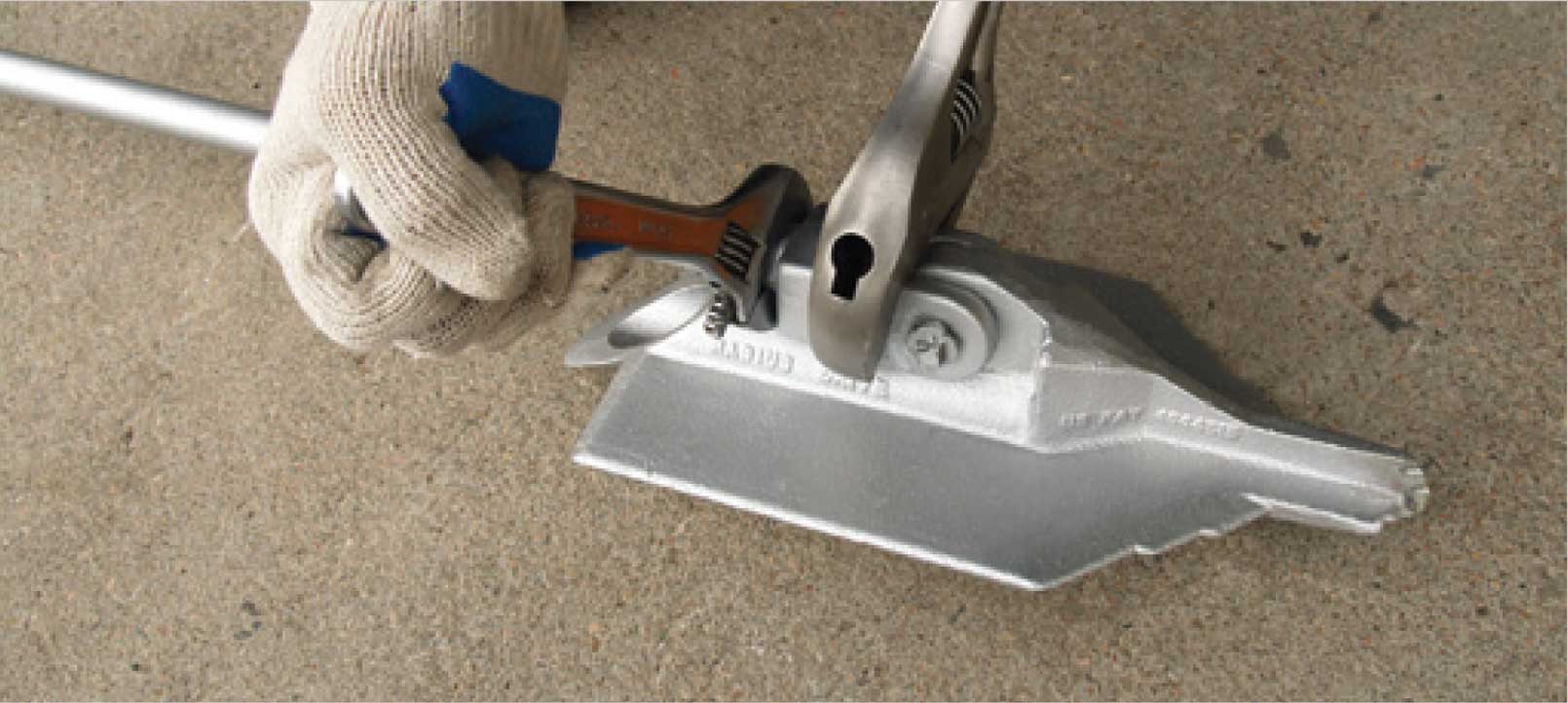Effective Anchor Systems Designed for Optimum Toughness
The layout of effective anchor systems is vital in making certain optimal strength and reliability throughout different applications, specifically in marine and civil design. By utilizing ingenious products and progressed design techniques, these systems not only enhance holding power yet additionally adapt to difficult environmental problems. As we explore the different sorts of support systems and the materials that underpin their effectiveness, it ends up being obvious that the future of securing modern technology may hold even higher innovations. What ramifications do these advancements have for safety and security and efficiency requirements in the market?
Relevance of Anchor Systems
Support systems play an essential function in various applications, from aquatic construction to offshore boring and also in the stability of structures on land. In aquatic environments, supports are important for mooring vessels, stopping drift due to wind, currents, or waves.
In addition to marine applications, support systems are important in civil engineering, especially in the construction of preserving wall surfaces, bridges, and buildings in geologically tough areas. These systems assist distribute tons efficiently, counteracting pressures such as dirt stress and seismic task. The relevance of support systems reaches the renewable power industry, where they safeguard wind generators and offshore platforms, adding to the stability and efficiency of energy generation.
Ultimately, the performance of an anchor system is fundamental to the safety, toughness, and functionality of different frameworks, making their layout and application a crucial component in design and building practices across several sectors.
Ingenious Products in Support Layout

Modern developments in materials science have dramatically changed support layout, enhancing efficiency and durability. The consolidation of composite materials and high-strength alloys has actually led to supports that can endure severe ecological problems while maintaining architectural stability. These cutting-edge materials not only supply exceptional tensile strength but likewise reduce weight, enhancing simplicity of installation and handling.
One notable development is the usage of carbon fiber reinforced polymers (CFRP), which supply outstanding deterioration resistance and high strength-to-weight proportions. This enables the design of anchors that are both lightweight and remarkably resilient, making them suitable for marine applications where direct exposure to saltwater can bring about product degradation.
Additionally, developments in finishes-- such as sophisticated epoxy and galvanization-- more shield metal supports from corrosion, extending their service life. These finishes can be tailored to fulfill specific environmental difficulties, guaranteeing that supports execute dependably also in severe conditions.
In addition, the combination of wise materials, which can adapt to changing lots and environmental elements, is leading the way for future support layouts. These developments highlight a fad in the direction of greater performance and integrity in securing solutions, ultimately improving safety across numerous applications.
Kinds of Effective Support Systems
Effective securing options are important for ensuring stability and safety in different applications, from building and construction to aquatic operations. Several kinds of reliable support systems attract attention for their performance and flexibility to various settings.
One popular kind is the screw anchor, which makes use of a helical layout to provide superior holding power in soil and soft ground. These supports are especially valuable in momentary frameworks and can be quickly gotten rid of and recycled.
One more commonly pre-owned system is the driven stack anchor, frequently employed in aquatic and hefty construction tasks. These anchors are driven deep into the ground, offering exceptional resistance to lateral pressures, making them suitable for sustaining huge frameworks.
For aquatic applications, the mooring buoy anchor system is vital. This system consists of resilient tools attached to anchors on the seabed, allowing vessels to useful source remain stable while decreasing drag from winds and currents.
Lastly, the deadweight support system relies upon heavy weights to supply security and is frequently made use of in overseas installments. Each kind of support system is created to meet certain requirements, making certain the safety and honesty of frameworks and vessels in numerous problems.
Security Specifications and Rules
Ensuring the safety and reliability of securing systems entails adherence to rigorous safety requirements and regulations. These requirements are established by different organizations, consisting of the American Culture for Testing and Materials (ASTM), the International Company for Standardization (ISO), and local building regulations. Conformity with these regulations is crucial to guarantee that securing systems can endure environmental stress and anxieties and lots, reducing the risk of failing.
Testing and qualification processes are essential elements of security standards. Anchoring systems must go through extensive evaluations, including tensile stamina examinations, fatigue tests, and recommended you read environmental influence assessments. These tests assist establish the systems' efficiency under real-world problems, ensuring they fulfill or exceed the called for security limits.
Additionally, makers are needed to give comprehensive specs and instructions for setup and upkeep, which are essential to supporting security requirements. Regular examination and upkeep protocols must additionally be developed to recognize prospective weaknesses over time.
Future Trends in Support Modern Technology
The future of anchor technology is poised for considerable innovations, driven by the boosting demand for improved safety and security and efficiency in building and engineering applications. Advancements are anticipated in materials, style, and installment strategies, which will certainly enhance the stamina and sturdiness of support systems.
One arising pattern is the this post assimilation of smart technology right into support systems. Earth Anchor. By including sensors, these systems can check stress and anxiety, load, and ecological problems in real-time, permitting proactive upkeep and enhanced integrity. In addition, improvements in composite products may bring about lighter, yet stronger supports that can endure severe problems, reducing the general weight of structures


Moreover, modular support systems are acquiring traction, enabling for much easier setup and adaptability to various task needs. Earth Anchor. As the industry welcomes automation, robot setup methods could further streamline the anchoring procedure, improving effectiveness and precision
Verdict
In verdict, effective anchor systems play a critical role in making sure the stability and safety of aquatic and civil design jobs. The incorporation of cutting-edge materials and progressed styles considerably boosts holding power and resistance to different ecological difficulties. Adherence to safety requirements and policies better highlights the relevance of dependability in support systems. As innovation proceeds to develop, future trends are anticipated to focus on wise surveillance services and lasting materials, leading the way for improved efficiency and longevity.
The layout of efficient anchor systems is essential in guaranteeing maximum toughness and integrity across different applications, especially in civil and aquatic design. As we explore the different types of support systems and the products that underpin their effectiveness, it becomes obvious that the future of securing modern technology may hold even higher advancements.Ensuring the security and dependability of securing systems includes adherence to strict safety requirements and guidelines.In conclusion, effective anchor systems play an essential role in making certain the stability and safety of civil and marine engineering projects. Adherence to safety criteria and regulations better emphasizes the relevance of integrity in support systems.